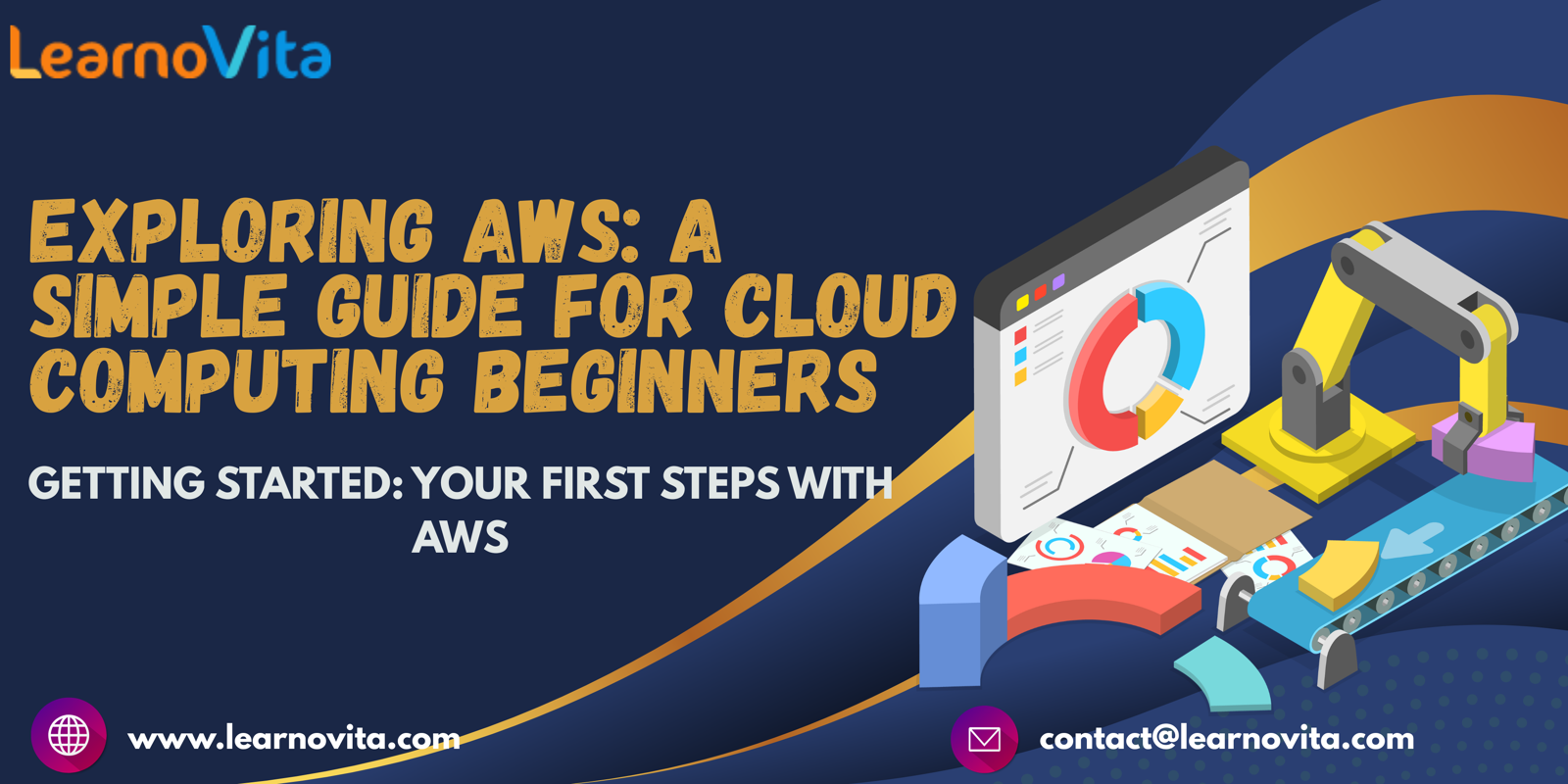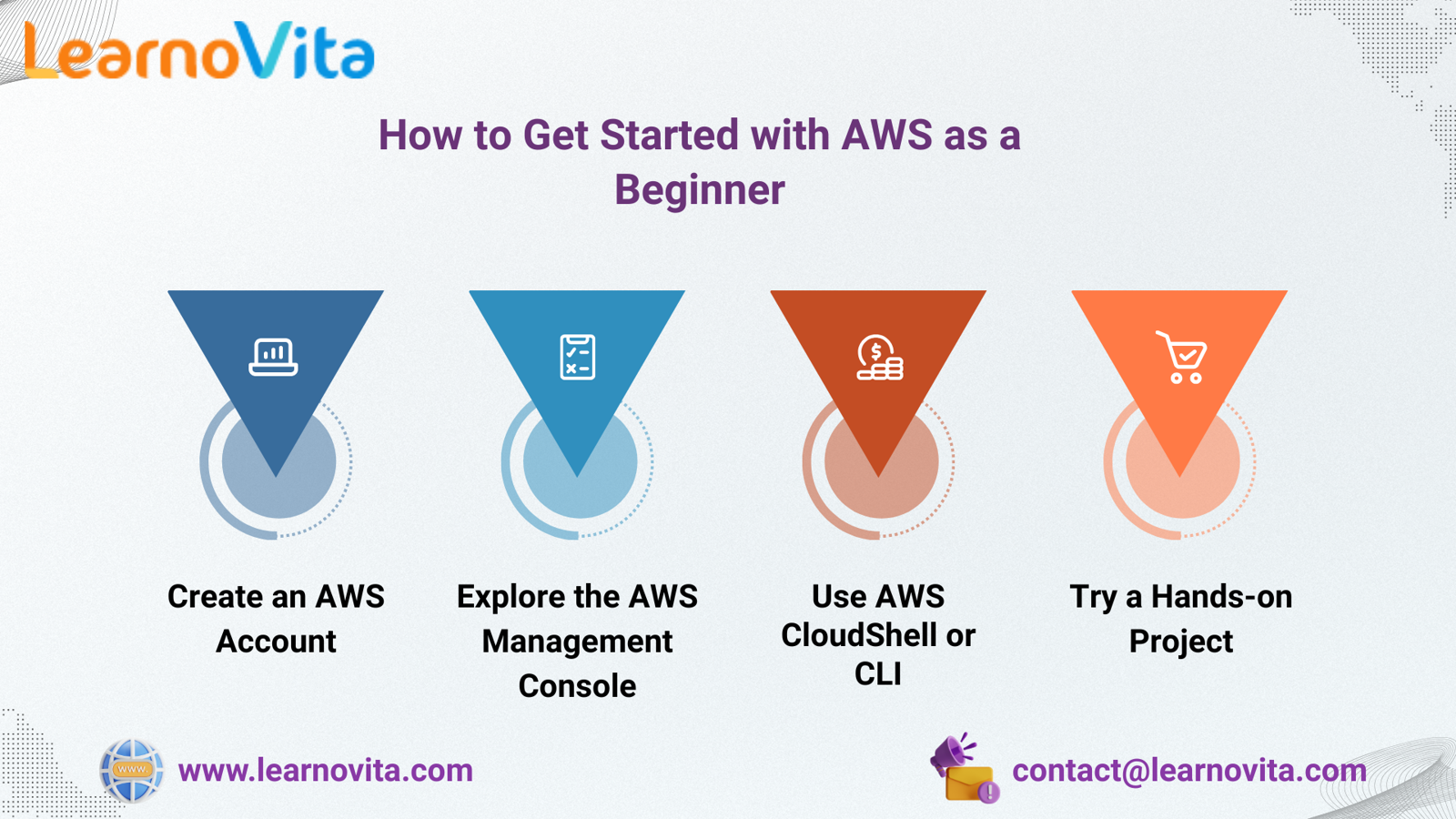Cloud computing is now the engine behind much of today’s technology. From running websites and storing massive data to powering global apps and business solutions, it’s everywhere. Leading this transformation is Amazon Web Services (AWS) a trusted and widely-used cloud platform. If you're just starting out and looking to understand the cloud, AWS is an excellent place to begin. This guide breaks down what AWS is, why it's important, and how you can get started without needing a tech background.
What Is AWS?
Amazon Web Services (AWS) is a cloud platform that offers a wide range of services like virtual servers, storage, databases, and security tools available over the internet. Instead of setting up your own hardware, you can rent what you need through AWS and only pay for what you use. Launched in 2006, AWS has grown to become the backbone for countless companies, including big names like Netflix, NASA, and Airbnb. With more than 200 services, AWS helps users create everything from basic websites to complex enterprise applications. The AWS Certification Course is designed to equip learners with in-demand cloud skills and prepare them for globally recognized AWS certification exams.

Why Start Learning AWS?
Whether you're aiming for a career in tech or simply exploring modern tools, AWS is a great place to begin. Here’s why:
Job Opportunities: AWS is a highly in-demand skill in today’s job market.
Beginner-Friendly: Many AWS services are easy to explore, even with limited technical knowledge.
Scalable Learning: Start simple and expand to advanced tools as you gain confidence.
Global Network: AWS has a strong global presence, ensuring speed and reliability.
No Cost to Start: The AWS Free Tier lets you experiment with many tools for free. If you want to build apps, manage servers, or even automate everyday tasks, AWS gives you the tools to do it all through the cloud.
Core AWS Concepts to Know
Before you start working with AWS, it helps to understand a few basic terms:
Regions & Availability Zones: AWS operates data centers worldwide, grouped into regions. Each region has multiple zones to provide backup and fast service.
Elasticity: AWS automatically adjusts resources based on your needs. You don’t need to overpay or worry about scaling.
IAM (Identity and Access Management): This controls who can access what in your account.
EC2 (Elastic Compute Cloud): A virtual server where you can host applications or websites.
S3 (Simple Storage Service): A flexible, secure space to store files, images, and documents.
RDS (Relational Database Service): Lets you run popular databases like MySQL and PostgreSQL without managing them manually. Understanding these building blocks helps you get comfortable with AWS’s ecosystem.
Getting Started: Your First Steps with AWS
Ready to dive in? Here's a beginner-friendly roadmap to help you start using AWS.
1. Create an AWS Account
Go to https://aws.amazon.com and sign up. The Free Tier lets you use services like EC2, S3, and RDS at no cost for up to 12 months. You’ll need a credit or debit card to sign up, but AWS won’t charge you unless you go over the free limits.
2. Use the AWS Management Console
The AWS Console is your control panel. It allows you to launch and manage services easily through a web interface. Here’s what you can do:
Start a virtual server (EC2)
Create cloud storage (S3)
Run code without a server (Lambda)
The console has a clean layout and step-by-step options to help beginners feel at ease.
3. Try the AWS CLI or CloudShell (Optional)
If you're comfortable with text commands, you can manage AWS services through the Command Line Interface (CLI) or CloudShell. These tools are great for automation and scripting tasks.
4. Build a Simple Project
Putting your knowledge into practice helps the most. Try:
Hosting a static website using S3
Running a virtual machine on EC2
Automating a task using Lambda
AWS offers step-by-step tutorials for beginners to complete these tasks with ease. Our Best Training & Placement Program ensures hands-on learning and career support, guiding you from skill-building to securing your dream job.

The AWS Free Tier: Learn Without Paying
AWS provides a Free Tier that’s ideal for exploring and learning. It includes:
750 hours per month of EC2 compute time
5 GB of storage with S3
750 hours of RDS database usage
1 million Lambda requests per month
You can try out real services, build small apps, or test your ideas all without spending money.
Where to Learn More
AWS offers plenty of learning resources for beginners:
AWS Skill Builder: Offers beginner courses and learning paths directly from Amazon.
AWS YouTube Channel: Great for visual learners, featuring how-tos and service walkthroughs.
AWS Documentation: The official guide for every service, filled with examples and clear steps.
Third-Party Platforms: Courses on Udemy, Coursera, or LinkedIn Learning guide you through real-world AWS use cases. The more you experiment, the more you’ll understand how AWS works.
Final Thoughts
Learning AWS doesn’t require years of tech experience. With its beginner tools, rich documentation, and free access, AWS is built to support curious minds whether you’re a student, a career switcher, or a hobbyist. Once you get started, you’ll see that building in the cloud isn’t just for large companies or developers. It’s accessible, scalable, and empowering for anyone willing to learn. If you’re ready to build, explore, and innovate, AWS is ready for you.


Write a comment ...